Clay-Tolerant Conifers
conifers
16 years ago
Featured Answer
Sort by:Oldest
Comments (70)
conifers
16 years agolast modified: 9 years agospruceman
16 years agolast modified: 9 years agoRelated Discussions
Heat Tolerant Conifers 2
Comments (44)cannot speak to heat tolerant conifers sad to say but i thought i would speak up for the surprising adaptability of Mexican conifers (Mexican oaks as well) to seemingly very different climates and localities. i have had gratifying success growing a number of species (likely mostly from areas with a summer rainfall maximum) here in the summer cool and dry (winter very wet) pacific north west (oregon coast)---including pinus montizumae, p. patula, p. pseudostrobus, p. estevezii,, cupressus montana, c. guadalupensis, and podocarpus matudae---.wonderful trees that once established seem to do well with little or no additional care....See MoreBest juglone tolerant "cousin it" look alike conifer
Comments (4)The whipcord I see mention of Cousin It...juglone tolerant... Downfall....slow grower: A very interesting and unique shrub, âÂÂWhipcordâ has glossy green foliage in summer with a bronzy look in winter. A full lush form will develop in full sun, in part shade it is more open and stringy looking with a fountain like form. Adds instant texture unlike any other to the gardens, and moves in the breeze like ornamental grasses. Great for accent or specimen plant, in a shrub or perennial border, on a slope or as a foundation plant. In ten years it will grow to about 2-3 feet tall and wide and may take as much as 30 years to reach full size. Although this is considered a dwarf, it is only because it is a sport of the giant Western Red Cedar. Here is a link that might be useful: http://www.orientalgardensupply.com/index.php/thuja-plicata-whipcord-42239.html This post was edited by cadillactaste on Fri, Aug 16, 13 at 22:42...See MoreHeat Tolerant Conifers
Comments (39)Beutiful photos from Conifers. Also, you are right-Thuja occidentalis is grown throughout the Atlanta area. wrt comments from Pineresin.Thank you for the corrections in nomenclature. Would like to add a few comments: 1. Taiwania flousiana vs. cryptomeriodes-I have read that flousiana grows a leader very easily and has a less blue green color, and this is the same behavior I have seen in the specimens I have grown. Can't comment on whether flousiana is actually a distinct species. 2. darjeelingsensis vs. cashmeriana vs. pseudohimlaicia-I have acquired several Cuppressus "darjeelingsensis" and a couple of "psuedohimalaica" from a US supplier (these are the names used by the supplier). The supplier calls the seed-grown trees darjeelingsensis and trees grown from cuttings, pseudohimalaica, and the pseudohimalaica have the weeping bluish branchlets that I have seen on trees called cashmeriana in botanic gardens in the US. The two pseudohimalaica I have, have only survived one mild winter here, so I don't know if they are viable in Atlanta, but they will be a wonderful addition to the local landscape if they are hardy here. (The Atlanta Botanic Garden grows their "cashmeriana" indoors in pots). The ABG "cashmeriana" and the "cashmeriana" grown at the Huntington Botanical Garden in Pasadena have the same appearance as the pseudohimalaica). 3. I have seen that Cunninghamia "unicaniculata" listed as lanceolota in almost all references as you indicate. Some suppliers in the US distinguish between them, perhaps because of the appearance, which is quite distinct, and climate preferences. In terms of climate preferences, the unicaniculata sold commercially in the US have behaved more like konishi than lanceolata for me. I understand that there is also controversy as to whether konishi shoud be a separate species (from lanceolata). 4. Chamaecyparis thyoides var. Henryae-quite right....See MorePerennials that tolerate clay
Comments (2)Pat, My place is sited on a heavy, compacted clay loam over a thick almost impermeable layer of caliche/limestone down about 4 feet. Also, a lot of caliche is on the surface after 90 years of people doing various kinds of excavations and building driveways, tractor yards, etc. at this old farmstead The perennial wildflowers that survive here the best and that aren't too weedy are as follows: Chocolate Daisy (Berlandiera lyrata), Engelmann's Daiay (Engelmannia ?), and Mexican Hat. I have had a Calylophus species (hartweggii?) look really good, too. A couple of sub-shrubs give me the most reliable season-long color: Salvia greggii and Texas Lantana (Lantana horrida). Tom...See Moretcharles26
16 years agolast modified: 9 years agobluespruce53
16 years agolast modified: 9 years agoconifers
16 years agolast modified: 9 years agopineresin
16 years agolast modified: 9 years agogreenlarry
16 years agolast modified: 9 years agogreenlarry
16 years agolast modified: 9 years agopineresin
16 years agolast modified: 9 years agogreenlarry
16 years agolast modified: 9 years agojustintx
16 years agolast modified: 9 years agogreenlarry
16 years agolast modified: 9 years agoscotjute Z8
16 years agolast modified: 9 years agoconifers
16 years agolast modified: 9 years agowisconsitom
16 years agolast modified: 9 years agojustintx
16 years agolast modified: 9 years agogreenlarry
16 years agolast modified: 9 years agolou_spicewood_tx
16 years agolast modified: 9 years agogreenlarry
16 years agolast modified: 9 years agolou_spicewood_tx
16 years agolast modified: 9 years agoconifers
16 years agolast modified: 9 years agopineresin
16 years agolast modified: 9 years agogreenlarry
16 years agolast modified: 9 years agolou_spicewood_tx
16 years agolast modified: 9 years agogreenlarry
16 years agolast modified: 9 years agopineresin
16 years agolast modified: 9 years agogreenlarry
16 years agolast modified: 9 years agolou_spicewood_tx
16 years agolast modified: 9 years agojustintx
16 years agolast modified: 9 years agogreenlarry
16 years agolast modified: 9 years agoconifers
16 years agolast modified: 9 years agolou_spicewood_tx
16 years agolast modified: 9 years agojustintx
16 years agolast modified: 9 years agogreenlarry
16 years agolast modified: 9 years agoconifers
16 years agolast modified: 9 years agogreenlarry
16 years agolast modified: 9 years agolou_spicewood_tx
16 years agolast modified: 9 years agojustintx
16 years agolast modified: 9 years agochester_grant
15 years agolast modified: 9 years agokaitain4
15 years agolast modified: 9 years agopineresin
15 years agolast modified: 9 years agoEmbothrium
15 years agolast modified: 9 years agokaitain4
15 years agolast modified: 9 years agojohnstaci
15 years agolast modified: 9 years agopineresin
15 years agolast modified: 9 years agobengz6westmd
15 years agolast modified: 9 years agokaitain4
15 years agolast modified: 9 years agoEmbothrium
15 years agolast modified: 9 years agopinetree30
15 years agolast modified: 9 years agojohnstaci
15 years agolast modified: 9 years ago
Related Stories
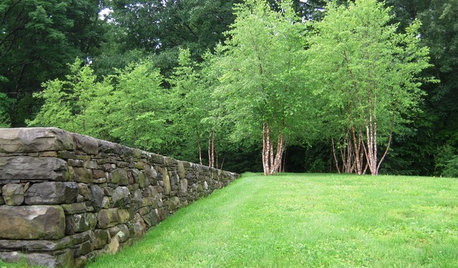
LANDSCAPE DESIGNFlood-Tolerant Native Trees for Soggy Soil
Swampy sites, floodplains, even standing water ... if you've got a soggy landscape, these trees are for you
Full Story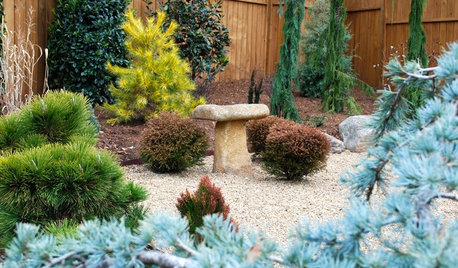
PLANTING IDEASDesigning With Conifers: Personality and Form in the Garden
Unique and full of interest, well-shaped conifers await a place your yard
Full Story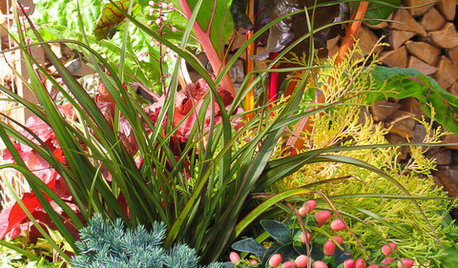
PLANTING IDEASStretch the Budget, Seasons and Style: Add Conifers to Your Containers
Small, low-maintenance conifers are a boon for mixed containers — and you can transplant them to your garden when they’ve outgrown the pot
Full Story
PLANTING IDEASDesigning With Conifers: Layers of Texture for Your Garden
Sharp and prickly or fine like ferns, richly textured conifers bring unexpected interest to the landscape
Full Story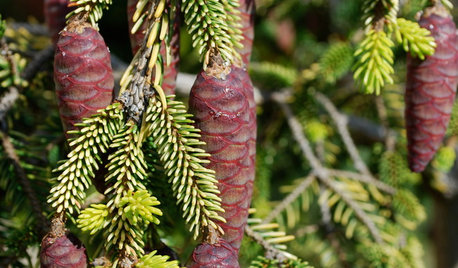
GARDENING GUIDESGreat Design Plant: Skylands Oriental Spruce, a Favorite Conifer
Brighten up a drab corner of your garden with Picea orientalis ‘Skylands’, a smaller spruce that a bird family might just call home
Full Story
GARDENING GUIDES10 Plants for Colorful Fall Blooms in the Drought-Tolerant Garden
Want fall color but not a big water bill? Consider these not-too-thirsty fall bloomers
Full Story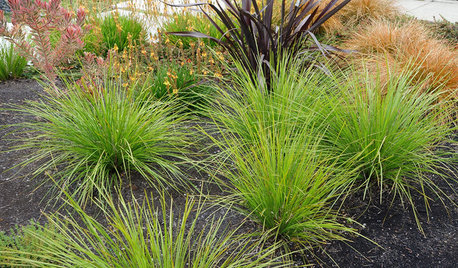
GRASSESVersatile Breeze Mat Rush Sails Into Drought-Tolerant Yards
Grassy Lomandra longifolia thrives year-round in shady and sunny gardens, in containers and in the ground
Full Story
GARDENING GUIDESHow to Stop Worrying and Start Loving Clay Soil
Clay has many more benefits than you might imagine
Full Story
GARDENING GUIDES9 Clay-Busting Native Flowers for Summer Sun
These plants survive and even thrive in tough clay soil east of the Rocky Mountains
Full Story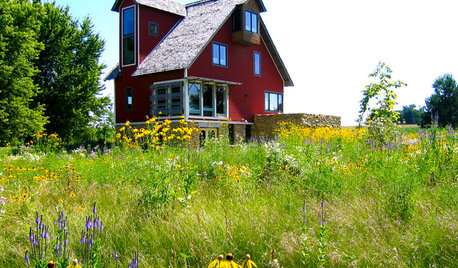
GARDENING GUIDESGardening Solutions for Heavy Clay Soils
What’s a gardener to do with soil that’s easily compacted and has poor drainage? Find out here
Full Story


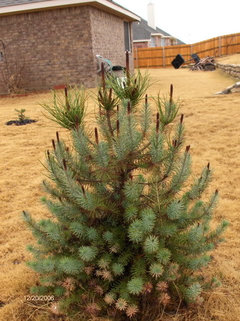

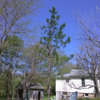
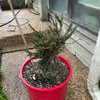


greenlarry